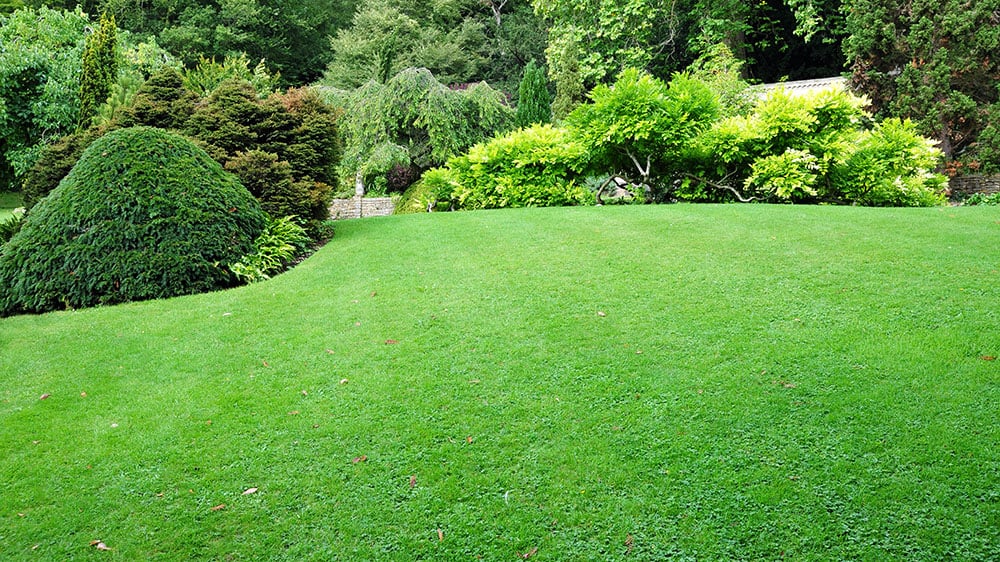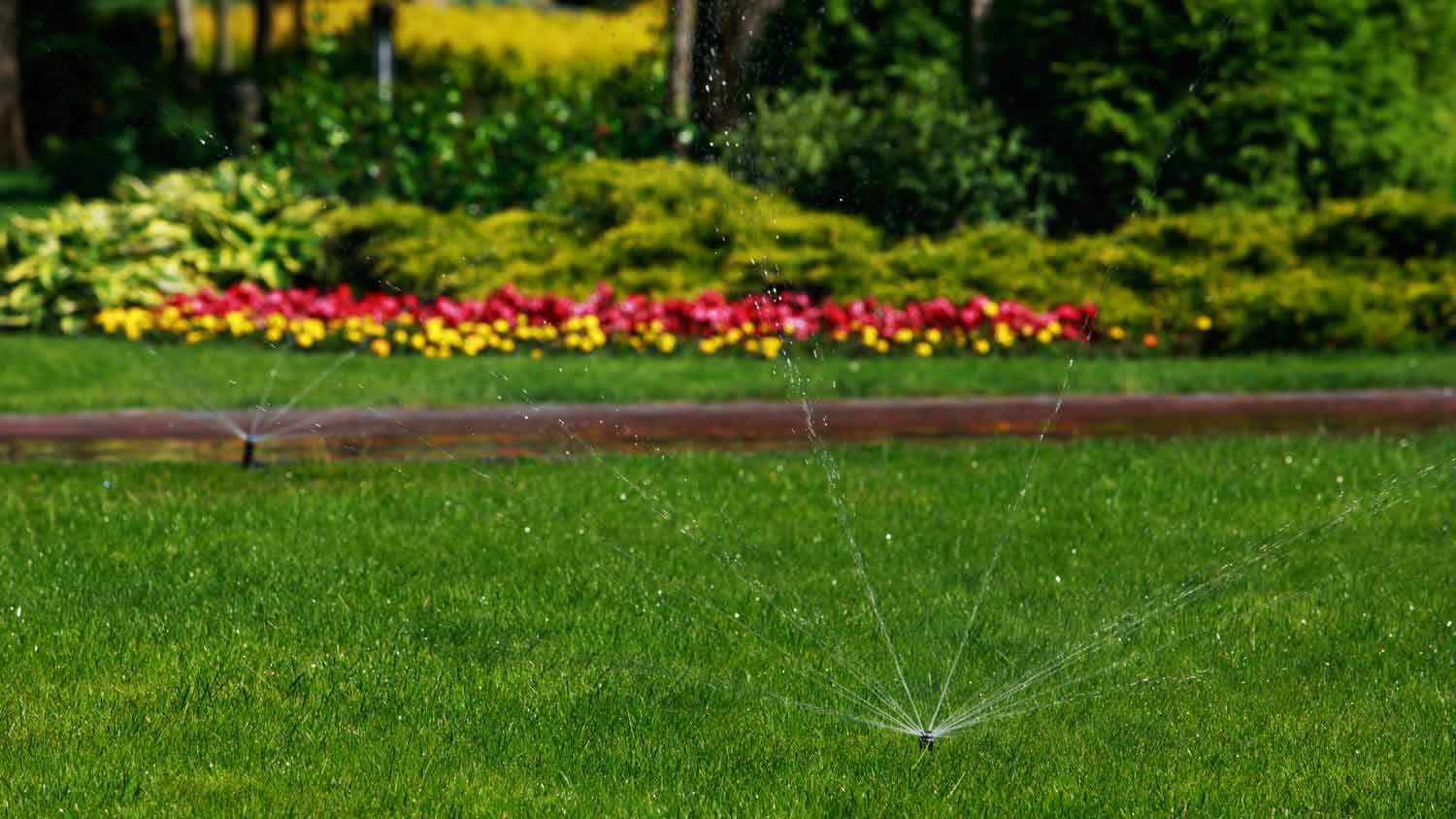Who to Call for Drainage Problems in Yard: Expert Solutions for Standing Water
The perfect drainage solution starts with the right pro


Whether you're facing a soggy lawn after heavy rainfall or water constantly pooling, it's important to know who to call for drainage problems in your yard. Let’s explore more about foundation drain installers, how they can help, the benefits of hiring them, and how these experts address standing water in your yard. Plus, we’ll dive into DIY solutions to some common issues.
Benefits of Hiring a Professional Landscaper for Drainage Problems in Your Yard
Professional landscapers aren’t just skilled at making your lawn aesthetically pleasing. These pros can assess drainage issues and use landscaping techniques to put an end to any unwanted water. Landscaping contractors can offer several benefits:
Aesthetic considerations: Landscapers can create designs that address drainage and enhance your yard's beauty.
Versatility: They provide a broad range of services, including regrading, planting, and hardscaping.
Customization: Landscaping pros can tailor solutions to match your preferences and budget and integrate features like decorative stonework, plants, and outdoor living spaces into your drainage plan.
Erosion control: Landscapers are well-equipped to handle erosion control measures, which can be critical for preventing soil loss and maintaining the integrity of your lawn.
Project coordination: These pros can coordinate multiple landscaping projects efficiently, saving you time and potential complications.
Peace of mind: With professionals handling your yard's drainage problems, you can enjoy peace of mind, knowing that your property is protected from water-related damage.
Compliance with local regulations: These professionals are familiar with local building codes and regulations related to drainage. Hiring them ensures that your yard's drainage improvements meet all legal requirements.
Can I Fix Standing Water in the Yard Myself?

While some yard drainage projects can be tackled by determined DIYers, others are best left to professionals. Let's explore a few common yard drainage ideas, their DIY-ability, and whether they are suitable for your situation.
Aerating the Lawn
Lawn aeration involves perforating the soil with holes, allowing air, water, and nutrients to penetrate the grass roots more effectively. It's a relatively simple task that many homeowners can handle on their own. Aeration equipment can be rented or purchased from hardware stores. However, hiring a professional may be more efficient for large yards or more severe drainage issues.
Amending the Soil
Amending your soil with organic matter can improve its drainage capacity. This task is also manageable for homeowners with small yards and basic gardening skills. However, consulting a professional landscaper may be a more effective solution for substantial soil amendments or complex issues.
Regrading Your Lawn
Reshaping the landscape in your yard is often called “regrading,” and it involves scraping away subsoil in higher areas and adding topsoil to lower areas to ensure proper water runoff. Large regrading projects can be complex tasks, while minor regrading efforts can be DIY projects. Significant yard regrading requires heavy equipment and expertise, so it's essential to assess the scope of the work and your abilities before attempting this.
Building a Retaining Wall
Constructing a retaining wall is a project that requires professional expertise. It involves structural considerations and engineering to ensure proper drainage and stability. If your yard drainage problem may involve the need for a retaining wall, consulting a professional is strongly recommended.
Installing a French Drain
French drains are trenches filled with gravel or rock and a perforated pipe that helps redirect groundwater away from an area to prevent flooding or water damage. While the concept is relatively simple, proper installation requires excavation and proper slope calculations. For precise and reliable results, it's recommended to hire a professional.
Digging a Dry Well or Catch Basin
Depending on your location, digging a dry well or catch basin can be labor-intensive and may involve permits. While it's technically possible for homeowners to handle, the effort and expertise required might make professional assistance a better option.
Installing a Dry Creek Bed or a Rain Garden
Creating a dry creek bed or a rain garden can be an excellent way to manage excess water in your yard while adding aesthetic appeal. Small-scale projects are doable for homeowners, but more extensive designs or those involving substantial excavation might be better suited for landscaping professionals.
Can I Hire a Sprinkler Repair Company for Drainage Problems?
A malfunctioning sprinkler system could be the reason for standing water in your yard. If that’s the case, you can hire a local lawn sprinkler repair pro. Whether it’s a broken pipe or faulty valve, a sprinkler repair pro has the knowledge and experience to fix the issue. Once your irrigation system is fixed, your drainage issues should also be resolved. On average, sprinkler system repair costs $130 to $410.
How Do Landscaping Pros Fix Drainage Problems in Yard?
Landscaping professionals follow a systematic approach to address drainage problems in your yard effectively.
Thoroughly assess your yard’s drainage issues, including identifying the source of the problem and the most suitable drainage solution.
Design a drainage system tailored to your yard's specific needs, taking into account factors like soil type, water flow, and the proximity of your home's foundation.
Begin excavation, if necessary, which involves digging trenches or structures to redirect water away from problem areas.
Install the drainage system according to the designed plan, which includes laying down drain pipes, catch basins, and other components required to divert water.
Backfill excavated areas and restore the yard to its previous state as closely as possible. This may involve seeding, sodding, or replanting, so a landscaping professional may be better for large drainage projects that significantly damage your lawn.
Test the drainage system to ensure effective water diversion and make adjustments as needed.
Frequently Asked Questions
You can identify a drainage problem in your yard by looking for standing water, persistent puddles, soil erosion, or water flooding your basement or crawl space after rain. Additionally, if your lawn appears consistently soggy or if plants and grass exhibit poor growth in certain areas due to excess moisture, these are strong indicators of drainage issues that require attention.
The cost of installing landscape drainage with the help of a professional can vary widely depending on factors like the scope of the project, your location, and the specific services needed. Smaller tasks, such as installing a French drain, may range from $10 to $50 per linear foot, while more extensive projects like installing a catch basin can cost several thousand dollars to tens of thousands. Obtaining multiple quotes from qualified professionals is recommended to get a precise estimate for your specific drainage issue.
The need for permits in drainage improvement projects depends on your location and the extent of the project. Generally, projects involving significant excavation, alterations to existing drainage systems, or those impacting public drainage systems may require permits. Check with your local building department or authorities to determine the specific permit requirements in your area before starting any drainage improvement work to ensure compliance with local regulations.





- Do You Know Who to Call for Drainage Problems in Your Yard?
- 13 Yard Drainage Ideas to Turn a Flooded Lawn Into a Healthy Landscape
- How to Fix a Soggy Lawn: 18 Tips for a Yard You’ll Love
- 9 Tips for Landscaping Around Your House to Prevent Flooding
- Who To Hire To Regrade Your Yard: A Complete Guide
- Driveway Drainage Solutions: 6 Ways to Prevent Water Issues
- 15 Wise Ways to Prevent Water From Flooding Your Yard
- 21 Front Yard Landscaping Ideas to Boost Your Curb Appeal
- Who Can I Hire To Do Yard Work?
- How Is Over-Irrigation Damaging to Soil? Is It Killing Your Lawn?










